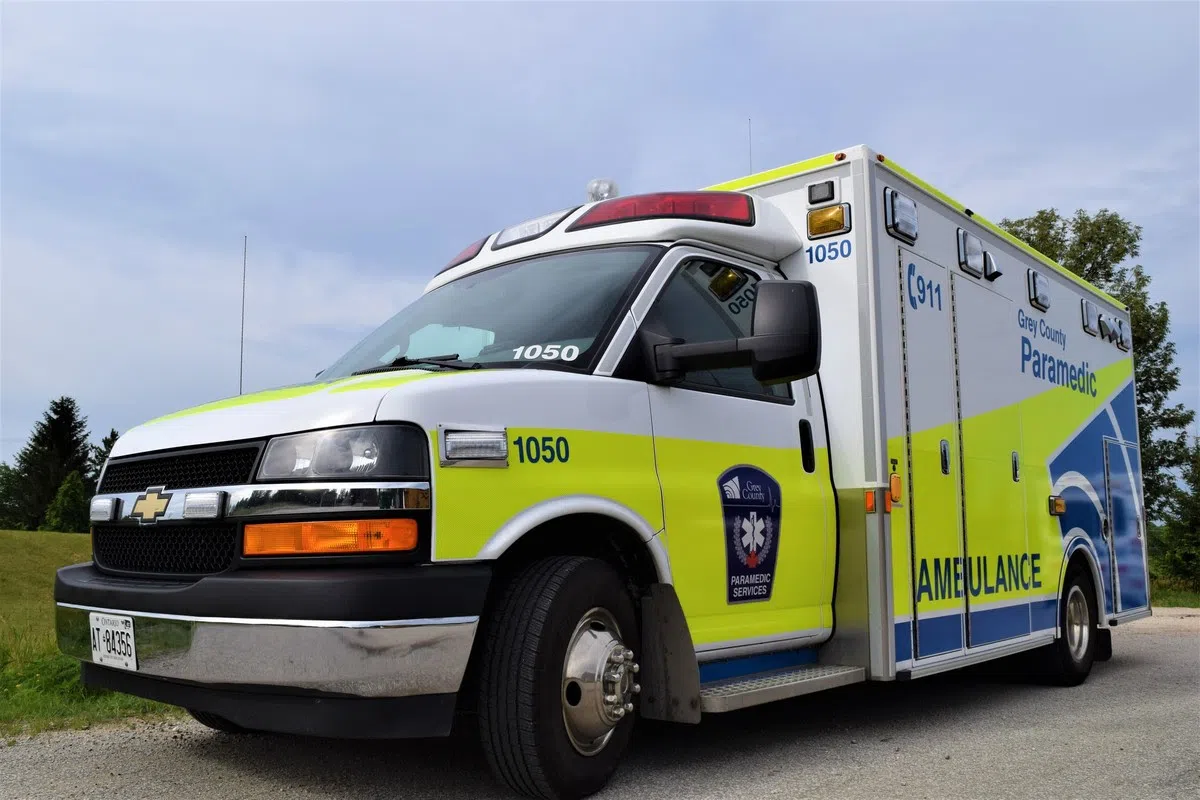Grey County paramedics have exceeded their targets for responding to calls.
A presentation to county council Thursday showed for the 2023 calendar year, paramedics exceeded targets for all call types while responding to a record 15,046 total calls for response. In 2022, there were 14,951calls.
Director of Paramedic Services Kevin McNab says they’ve seen an increase in patient call volume of 26.9 per cent over the past 5 years.
In addition to exceeding 2023 targets, response times matched or exceeded Grey County’s five-year performance average for all call types.
McNab says, “Even as call volumes continue to grow, our professional team is rising to the challenge, proving high quality and timely first response to those in need.”
Grey County says it reviews response targets each year. Performance is measured across six triage levels determined by the severity of the call. Sudden cardiac arrest are the most urgent and have a response target of six minutes or less 40 per cent of the time.
Canadian Triage and Acuity Scale (CTAS) 1 calls require resuscitation and are life threatening, such as cardiac arrests or major trauma. The response target for CTAS 1 calls is eight minutes or less 60 per cent of the time. CTAS 2 calls require emergency care and may be life threatening, such as a head injury or internal bleeding. The response target for CTAS 2 calls is 15 minutes or less 90 per cent of the time. CTAS 3 calls require urgent care for conditions that could progress to serious problems, such as moderate breaking problems or a resolved seizure. CTAS 4 calls are less urgent conditions that would benefit from help or reassurance, such as wounds requiring stitches. CTAS 5 calls are non-urgent conditions which could be delayed or referred to other areas of the healthcare system, such as a sore throat or a dressing change. The response time for CTAS 3, CTAS 4 and CTAS 5 calls is 20 minutes or less 90 per cent of the time.
A deployment review was done in 2023 to better understand the growing demand for paramedic services over the next 10 years. It recommends adding a new base in Feversham, rebuilding the base in Durham, and phasing in additional shifts at other bases.
McNab included in presentation to council, considerations of hospital ER overnight closures. In Grey County, the Durham hospital ER now has some overnight closures. Chesley’s ER in Bruce County is also closed overnight.
McNab says, “We’re able to model what this looks like with these closures. We have determined there are really low numbers going into those hospitals at night, so the impact to us— there is some, but it’s small.”
McNab said they also looked at the Durham paramedic base location and determined it is still in the right location.
“Even though there is a small impact on our response time, there are considerations: one is longer treatment to transport time so we’ll be with the patients longer. If we go to Hanover it’s not as bad because our base is side by side so we will clean up if we need to do clean up there. If we go to Mount Forest, we can use hospital cleaning supplies, we have our own cleaning supplies and we generally have enough stock in our truck but if it was a call where it really depleted us, potentially, we’d be out of service until we got back to our own base. But that is really a rare situation.”
He does warn if the hospital in Hanover gets overloaded with patients there’s a chance of delay in being able to offload ambulance patients. “We have has some times where we’ve been on bypass for CTAS C-3 to C-5 where we take them to other hospitals, because they’re inundated. But we haven’t seen that yet, but that’s something that’s a possibility down the road,” says McNab.




